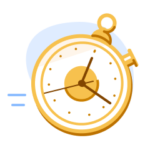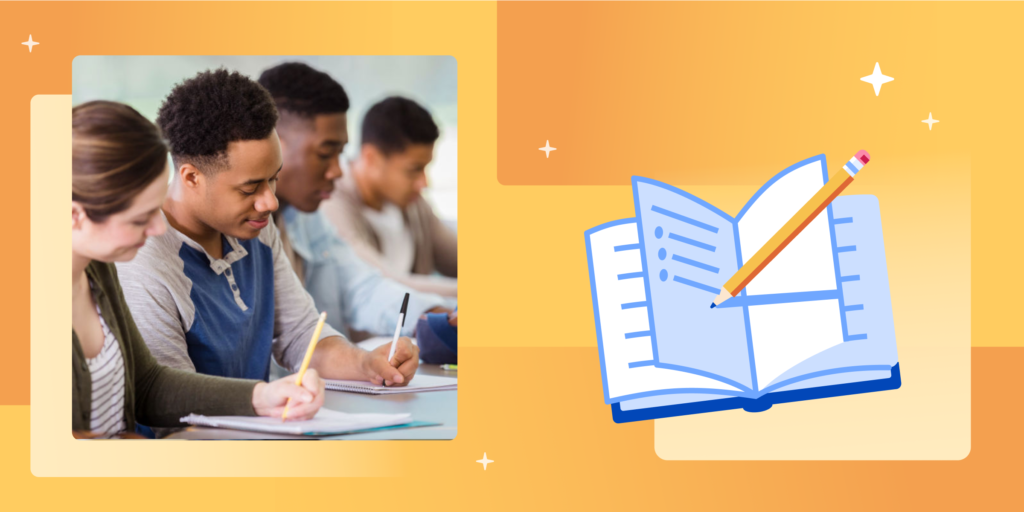The IELTS Reading section is the second part of the IELTS test, whether you take the Academic or General Training test option. You’ll complete it immediately after the Listening section. To complete this section, you’ll have to read three passages and answer 40 questions in 60 minutes. You might be wondering, “is the IELTS exam reading test difficult?” For many folks, the biggest challenge of the IELTS Reading section is having to read multiple passages, and answer questions about what you read in a short amount of time. This is especially true if you’re taking the IELTS Academic test: its Academic Reading section can have more complex texts, similar to content you might see in a post-secondary classroom. However, with good prep strategies and lots of practice, you’ll set yourself up for IELTS success. We’ve got 10 reading tips for IELTS that can help you get a high score!
Ready to start your study abroad journey? Explore 140,000+ study abroad options and get personalized recommendations for free.

Read Lots of Different Media Types
Read as much as you can, across publication types—books, newspaper articles, online publications, academic materials, and social media. Because the IELTS reading topics come from diverse sources, reading different content styles will help you prepare effectively. It can also improve your reading comprehension and broaden your English-language vocabulary. Plus, you might learn new slang and understand different speaking patterns. Even listening to music can be helpful. Bonus points if you look up the lyrics!
Your reading speed will improve, too, which will give you an edge when taking the test. Reading questions quickly (but still thoroughly) can save you valuable time.
But Don’t Make Reading Your Only Study Tactic
Being an avid reader is great. However, the IELTS Reading section is designed to test your ability to identify important information within a larger text. So unless you’re closely analyzing everything you read, you won’t be fully prepared.
One way to strengthen this skill is to create questions about what you’re reading. To do this, find an article that interests you. As you read it, take note of what you think is the most important information in it. After, come up with a question or two (in the IELTS Reading test format) about the article. This will help you get in a mindset that will lead to success.
Ensure your IELTS test prep is well-rounded: check out our top strategies for boosting your IELTS Writing, IELTS Speaking, and IELTS Listening scores.
Learn Unfamiliar Words
As you practice reading in English, get into the habit of highlighting or underlining confusing words or phrases. Then, look them up using a reputable dictionary (like Merriam Webster or the Oxford English Dictionary) to learn what they mean. This will help you avoid stumbling across a word you don’t recognize during the test.

Try Reading the Questions First
Before reading the passages in the Reading section of the IELTS test, look at the related questions. Since the questions are tied to the passages, knowing what the questions are looking for can help you know what to look out for as you read.
After reading through the passage once, return to the questions and re-read them. This will help you pinpoint which sections of the text you need to pay careful attention to.
Check Your Spelling
If your answer is spelled incorrectly, it will be marked wrong. The good news is that you don’t lose points for wrong answers, so if you’re not sure how to spell a word, try it anyway. You may get it right!
Check out our list of the 5 Best IELTS Preparation Books for International Students and the 6 Common IELTS Mistakes and How to Avoid Them for more IELTS guidance.
Watch Out for Traps
As mentioned above, the IELTS Reading test section is all about reading a text and identifying key information. Let’s say you’ve followed our advice and read the questions before reading the text. You then spot a word in the text which you saw in one of the questions. That must be the answer, right?
Not always.
The Reading section is built to test your reading comprehension. What does that mean? Some questions are designed to make you think they have obvious answers. Always re-read your answers to make sure they fit what the question asks. Don’t fall into a trap!
Labelling Diagrams
During the Reading test, you may be asked to label a diagram. The good news is that you’ll find the words you need in the text. Spelling counts here too, so always double-check your answers.

Highlight Important Information
The Reading section asks you to process a lot of information in a short amount of time. To find key points faster when you’re re-reading, underline and circle important words and sentences as you go.
Divide Your Time Evenly
In the Reading test, you’ll answer questions on three different passages. We recommend spending around 20 minutes on each one. This may not seem like much time, but remember: you only have one hour to complete the Reading section.
By splitting your time evenly, you’ll give yourself the best chance of overall success.
A Few More IELTS Reading Test Tips:
- You don’t lose points for wrong answers—so never leave a blank space
- Make notes on your question paper, but remember, only your answer sheet will be marked
- You’ll be writing in pencil, so remember to bring an eraser
- For the True/False questions, you can write “T” or “F” instead of True or False, respectively
- Questions aren’t always linear, meaning the process of answering them doesn’t necessarily have one starting and ending point
We hope you found these tips to support your IELTS reading test performance helpful, and wish you the best of luck on the IELTS Reading section!
Ready to find your dream study program? Explore 140,000+ study abroad options and get personalized recommendations for free.



